Towards a City-Based Cultural Ecosystem Service Innovation Framework as Improved Public-Private-Partnership Model—A Case Study of Kaohsiung Dome
Abstract
1. Introduction
1.1. Research Background
1.2. Research Motivation and Purpose
2. PPPs and Cultural Ecosystem Service Innovation
3. Research Design
3.1. Research Methods
- Opinion survey method: The survey sample is based on the personal and group opinion survey data of the official website and paper collection of the Kaohsiung Dome.
- Empirical research method: case investigation and field research have been conducted. The analysis source of the case study includes the relevant document file records of the overall operation of the Kaohsiung Dome over the years, the practical interviews of the relevant personnel in the library and the cooperation of the participating groups, the actual observation results of the participants, and so on.
3.2. Research Object
3.3. Research Structure
- Sub-structure 1: Kaohsiung Dome’s PPP model structure, Kaohsiung City Government commissioned Han-Wei Dome Company to build Kaohsiung Dome in PPP mode.
- Sub-structure 2: After the completion of the Kaohsiung Dome, Han-Wei Dome Company commissioned the professional management team of the Dome, the Kegel Big Dome Company, to manage the Kaohsiung Dome with CESI framework.
- Sub-structure 3: Kegel Big Dome Company applies the CESI framework to provide the overall cultural services of the general public. When people enjoy the facilities and activities, they will give relatively equal feedback to the operators so that the government departments, private enterprises, and the general public can benefit each other.
3.4. Research Data
- (1)
- Collecting relevant documents and archives records of the overall operation of the Kaohsiung Dome over the years;
- (2)
- Reference Kaohsiung Dome official website information;
- (3)
- Practical interviews between relevant personnel and participating groups in Kaohsiung Dome;
- (4)
- Actual observations of participants.
4. Case Study of Kaohsiung Dome and Cultural Ecosystem Service Innovation
4.1. PPP of Kaohsiung Dome
- (1)
- Kaohsiung City Government (public sector) benefits:
- Improve the efficiency and effectiveness of public facilities services;
- Avoid over-investment in public infrastructure projects;
- Improve the quality of public construction;
- Improve resource efficiency;
- Avoid delays in public works;
- Improve the quality of public construction services;
- Reduce government burden;
- Increase government revenue;
- Improve international visibility;
- Sustainable development.
- (2)
- Kaohsiung Dome (private sector) benefits:
- Reduce operating costs;
- Expand the scale of the company;
- Improve corporate image;
- Multi-angle management;
- Demonstrate social responsibility.
- (3)
- Public (community organizations) benefits:
- Increased sports events and art performances;
- Leisure sightseeing and shopping attractions;
- Formed the largest business district in North Kaohsiung City;
- Drive the prosperity of nearby business districts;
- Promoting the development of surrounding real estate;
- Increase the number of tourists and economic benefits;
- Create career opportunities.
4.2. Cultural Ecosystem Service Innovation of Kaohsiung Dome
4.3. Business Performance Evaluation of Kaohsiung Dome
5. Conclusions
Author Contributions
Funding
Conflicts of Interest
References
- United Nations. A Guidebook on Public-Private Partnership in Infrastructure; Economic and Social Commission for Asia and the Pacific, United Nation: Bangkok, Thailand, 2011; Available online: https://www.unescap.org/sites/default/files/ppp_guidebook.pdf (accessed on 8 October 2019).
- World Bank. 2018 Private Participation in Infrastructure (PPI) Annual Report. The World Bank, 2019. Available online: https://ppi.worldbank.org/content/dam/PPI/documents/PPI_2018_AnnualReport.pdf (accessed on 8 October 2019).
- Center for Management Practice, SMU. Public-Private Partnerships: A Case Study on Singapore’s National Stadium. Centre for Management Practice, Singapore Management University, 2018. Available online: https://cmp.smu.edu.sg/article/public-private-partnerships-case-study-singapores-national-stadium (accessed on 8 October 2019).
- Karner, M.; Lange, K.; Chan, C.W. Stakeholder Issues at the Singapore Sports Hub, Teaching Case of SMU; Centre for Management Practice, Singapore Management University: Singapore, 2018. [Google Scholar]
- Stålhammar, S.; Pedersen, E. Recreational cultural ecosystem services: How do people describe the value? Ecosyst. Serv. 2017, 26, 1–9. [Google Scholar] [CrossRef]
- Chen, C.; Li, D.; Man, C. Toward sustainable development? A bibliometric analysis of PPP-related policies in China between 1980 and 2017. Sustainability 2019, 11, 142. [Google Scholar] [CrossRef]
- Neto, D.; Cruz, C.O.; Rodrigues, F.; Silva, P. Bibliometric analysis of PPP and PFI literature: Overview of 25 years of research. J. Constr. Eng. Manag. 2016, 142, 1943–7862. [Google Scholar] [CrossRef]
- Cui, C.; Liu, Y.; Hope, A.J.; Wang, J. Review of Studies on the Public–Private Partnerships (PPP) for Infrastructure Projects. Int. J. Proj. Manag. 2018, 36, 773–794. [Google Scholar] [CrossRef]
- Reijniers, J.J.A.M. Organization of public-private partnership projects: The timely prevention of pitfalls. Int. J. Proj. Manag. 1994, 12, 137–142. [Google Scholar] [CrossRef]
- Peng, J.; Hu, X.; Zhao, M.; Liu, Y.; Tian, L. Research progress on ecosystem service trade-offs: From cognition to decision-making. Acta Geogr. Sin. 2017, 72, 960–973. [Google Scholar]
- Yun, J.J. How do we conquer the growth limits of capitalism? Schumpeterian dynamics of open innovation. J. Open Innov. Technol. Mark. Complex. 2015, 1, 17. [Google Scholar] [CrossRef]
- Gupta, A.; Dey, A.; Singh, G. Connecting corporations and communities: Towards a theory of social inclusive open innovation. J. Open Innov. Technol. Mark. Complex. 2017, 3, 17. [Google Scholar] [CrossRef]
- Crowther, D.; Aras, G. Corporate Social Responsibility. Ventus Publishing ApS, 2008. Available online: https://books.google.com.br/books?hl=zh-TW&lr=&id=gZcPp7WLDQ8C&oi=fnd&pg=PA7&dq=Crowther,+D.,+Aras,+G.+Corporate+Social+Responsibility,+Ventus+Publishing+ApS.+2008&ots=AEv8-OpYJR&sig=Ge9mixYE4D7thTC0-Usbb9xylBw&redir_esc=y#v=onepage&q&f=false (accessed on 8 October 2019).
- Crane, A.; Palazzo, G.; Spence, L.J.; Matten, D. Contesting the Value of Creating Shared Value. Calif. Manag. Rev. 2014, 56, 130–153. [Google Scholar] [CrossRef]
- Porter, M.E.; Kramer, M.R. The big idea: Creating shared value. Harv. Bus. Rev. 2011, 89, 2–17. [Google Scholar]
- Yan, M.R. Project-based competition and policy implications for sustainable development in building and construction sectors. Sustainability 2015, 7, 15423–15448. [Google Scholar] [CrossRef]
- Yan, M.R.; Chien, K.M.; Hong, L.Y.; Yang, T.N. Evaluating collaborative ecosystem for innovation-driven economy: A systems analysis and case study of science parks. Sustainability 2018, 10, 887. [Google Scholar] [CrossRef]
- Yan, M.R. Improving entrepreneurial knowledge and business innovations by simulation-based strategic decision support system. Knowl. Manag. Res. Pract. 2018, 16, 173–182. [Google Scholar] [CrossRef]
- Fish, R.; Church, A.; Winter, M. Conceptualising cultural ecosystem services: A novel framework for research and critical engagement. Ecosyst. Serv. 2016, 21, 208–217. [Google Scholar] [CrossRef]
- Kaohsiung City Government Official Website. Available online: https://www.kcg.gov.tw/News_Video_Content.aspx?n=FD4CAE493012714E&sms=7B7133028F758111&s=C32D28E7A48F2DBC (accessed on 8 October 2019).
- Skyline Vision Studio 2015. Available online: http://www.k-arena.com.tw/video.php (accessed on 8 October 2019).
- Kaohsiung Dome Official Website. Available online: http://www.k-arena.com.tw (accessed on 8 October 2019).

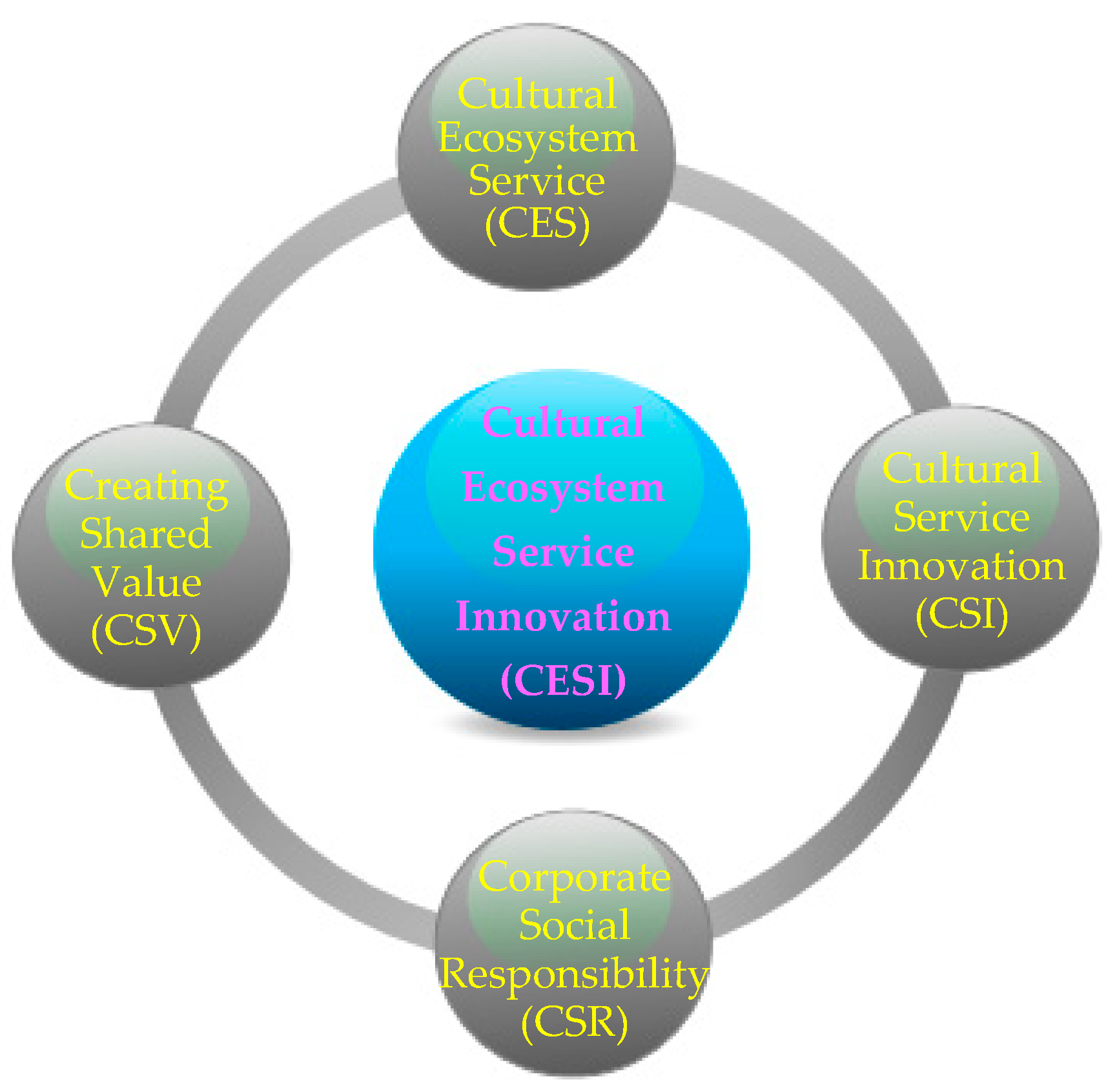

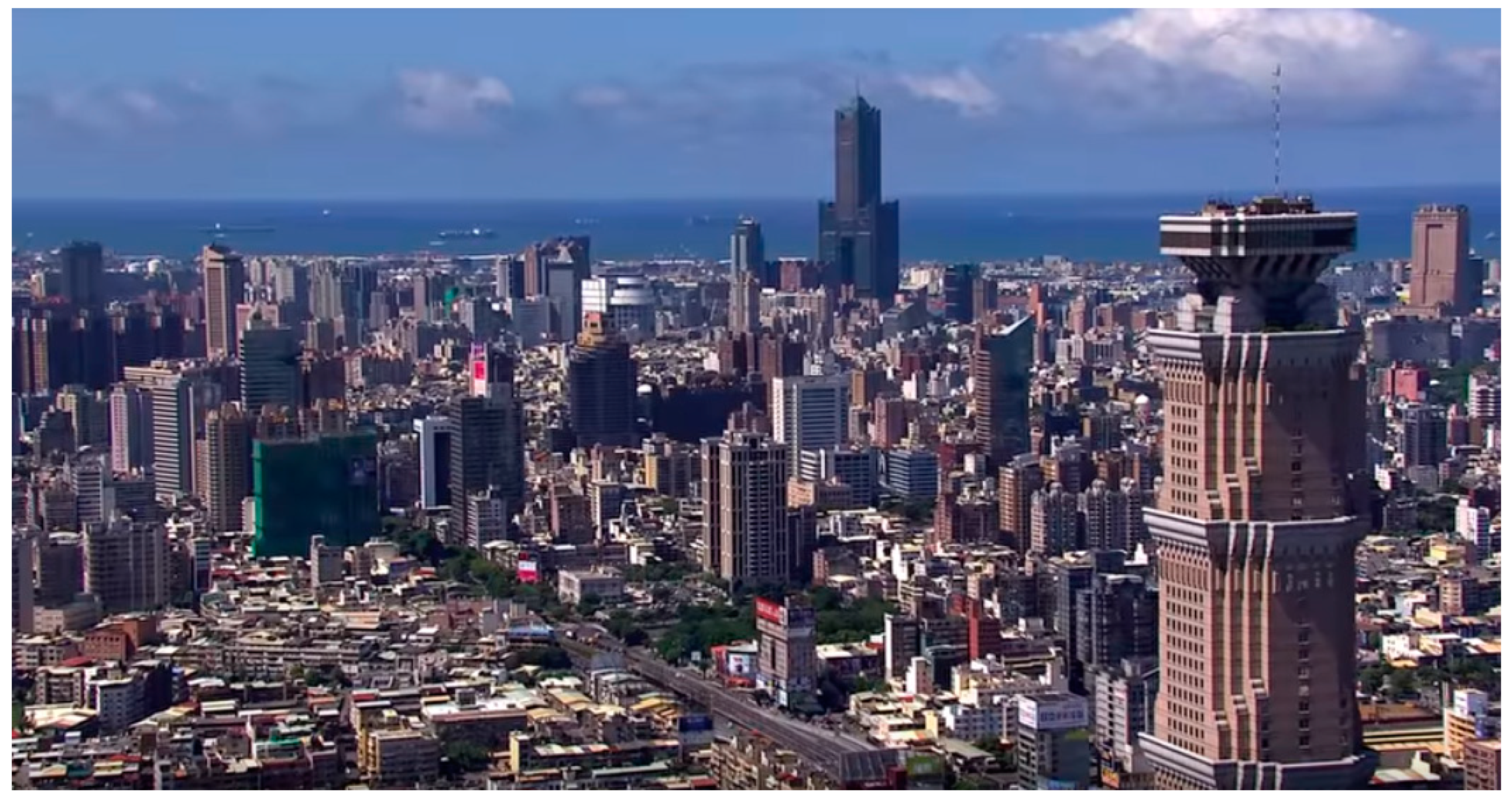






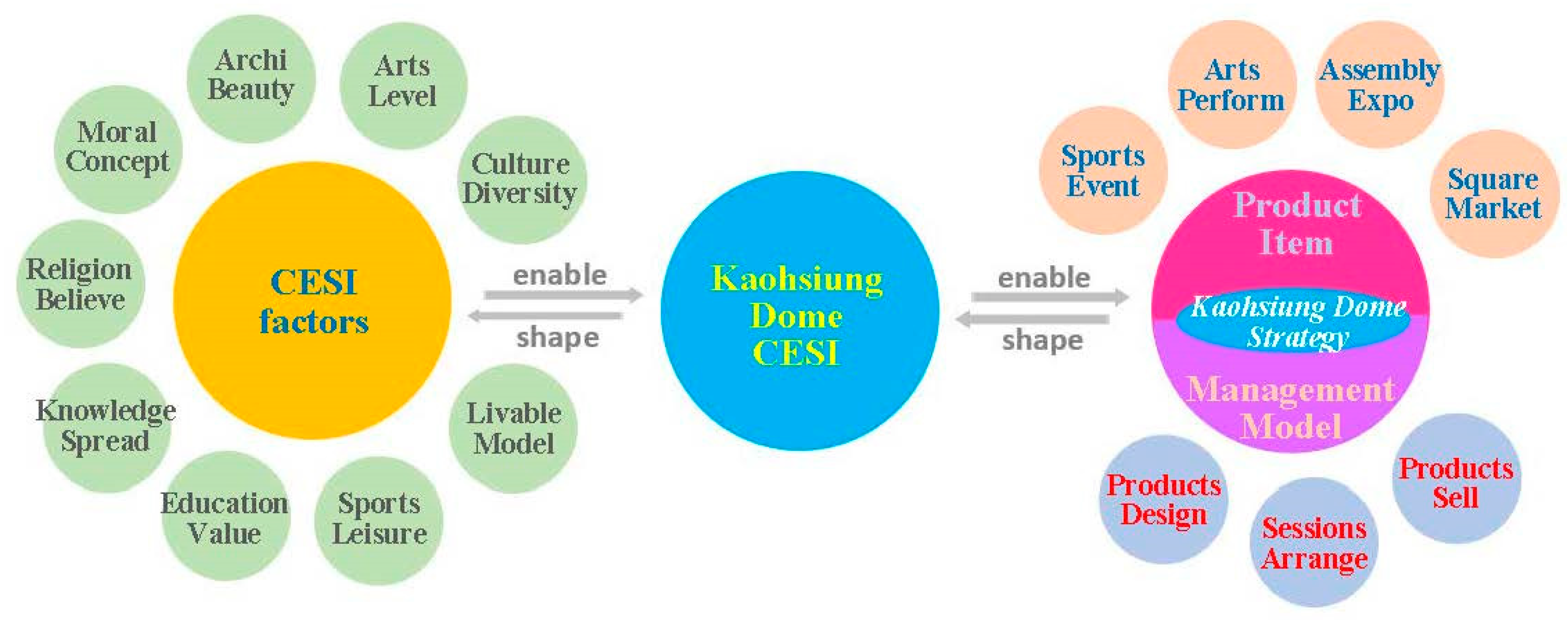

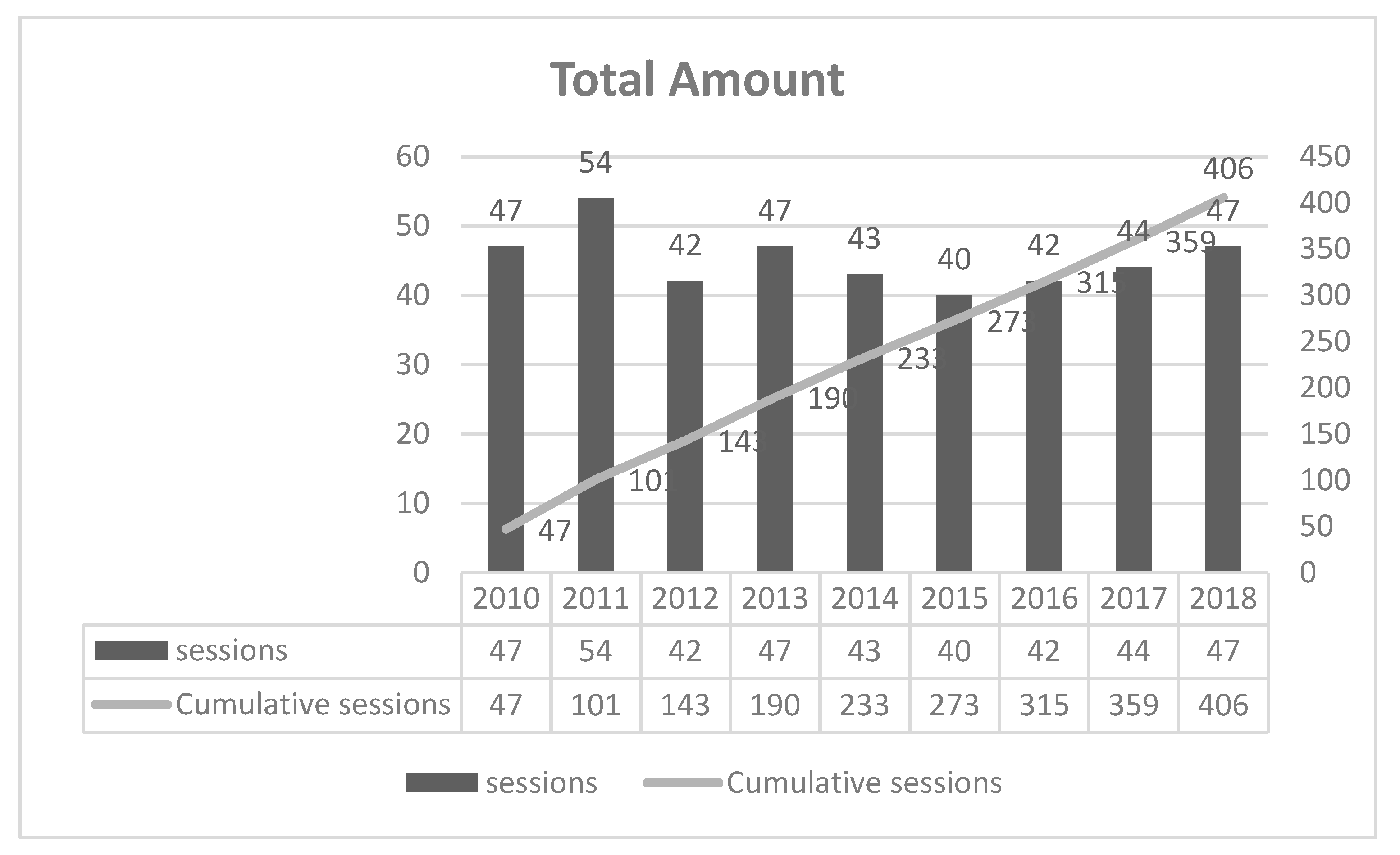
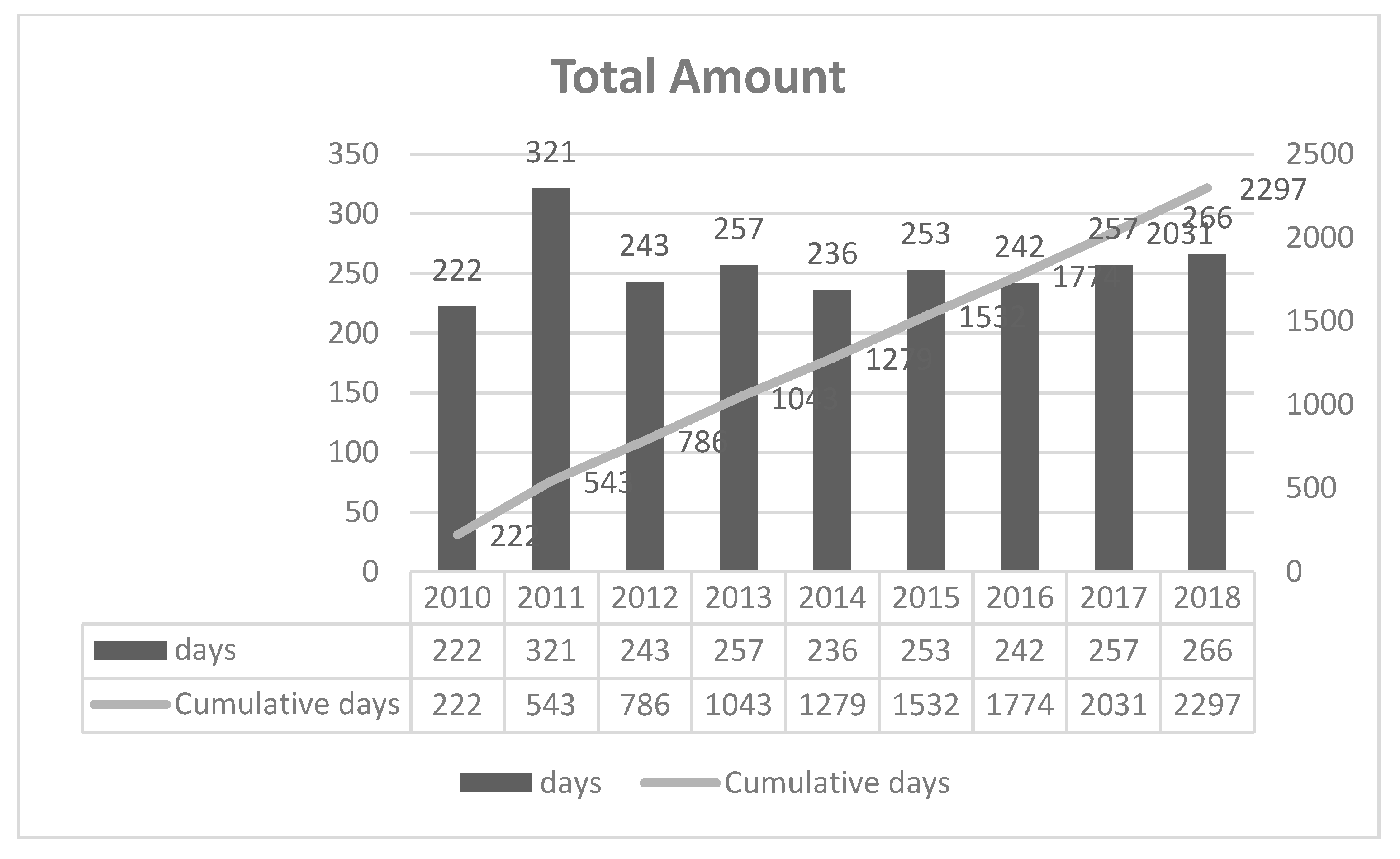
© 2019 by the authors. Licensee MDPI, Basel, Switzerland. This article is an open access article distributed under the terms and conditions of the Creative Commons Attribution (CC BY) license (http://creativecommons.org/licenses/by/4.0/).
Share and Cite
Yan, M.-R.; Chi, H.-L.; Yang, J.-Y.; Chien, K.-M. Towards a City-Based Cultural Ecosystem Service Innovation Framework as Improved Public-Private-Partnership Model—A Case Study of Kaohsiung Dome. J. Open Innov. Technol. Mark. Complex. 2019, 5, 85. https://doi.org/10.3390/joitmc5040085
Yan M-R, Chi H-L, Yang J-Y, Chien K-M. Towards a City-Based Cultural Ecosystem Service Innovation Framework as Improved Public-Private-Partnership Model—A Case Study of Kaohsiung Dome. Journal of Open Innovation: Technology, Market, and Complexity. 2019; 5(4):85. https://doi.org/10.3390/joitmc5040085
Chicago/Turabian StyleYan, Min-Ren, Hui-Lan Chi, Jui-Ying Yang, and Kuo-Ming Chien. 2019. "Towards a City-Based Cultural Ecosystem Service Innovation Framework as Improved Public-Private-Partnership Model—A Case Study of Kaohsiung Dome" Journal of Open Innovation: Technology, Market, and Complexity 5, no. 4: 85. https://doi.org/10.3390/joitmc5040085
APA StyleYan, M.-R., Chi, H.-L., Yang, J.-Y., & Chien, K.-M. (2019). Towards a City-Based Cultural Ecosystem Service Innovation Framework as Improved Public-Private-Partnership Model—A Case Study of Kaohsiung Dome. Journal of Open Innovation: Technology, Market, and Complexity, 5(4), 85. https://doi.org/10.3390/joitmc5040085





